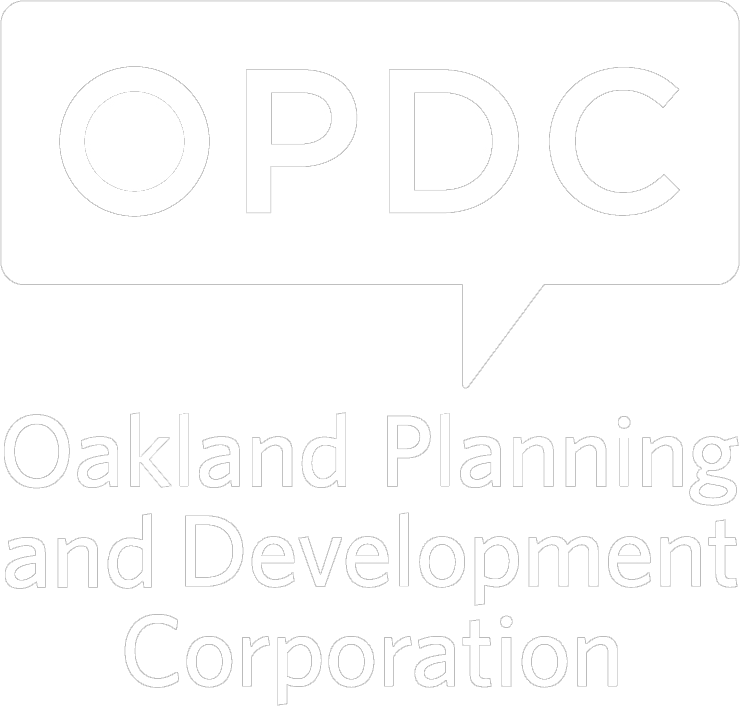Oakland’s “normal” is a state of flux. This is a neighborhood – or a collection of neighborhoods – that is constantly being changed in ways both subtle and dramatic, and the dynamism of this place is part of what draws people here. That draw can present a challenge: it sometimes seems like everyone in the region wants a piece of Oakland, and has an opinion about what it could or should be. Neighborhood planning here can be pretty contentious for this reason. There are a lot of opposing interests to balance.
The most powerful tool in the neighborhood planning kit is the zoning map. Zoning defines what can and cannot be built in a given area, and can also include requirements about how new buildings relate to the streetscape and the neighborhood at large. A neighborhood zone could govern how tall or how massive a new building can be, how much greenspace it has to include, how many parking spaces it must provide, how much energy or water it must conserve. It can also lay out acceptable uses, such as housing, commercial, industrial, retail, cultural, recreation, or entertainment.
Drawing a zoning map is a complicated business, and done right will involve a lengthy conversation with the community. Planners could propose a set of ideas; residents and stakeholders can provide feedback; planners then incorporate that feedback and present a new or revised set of ideas; and the public provides comment again. This iterative process can continue for months or even years, depending on the circumstances – but it’s important to get it right, and doing it right takes time.
Oakland is currently engaged in a comprehensive neighborhood planning process. Over the past two years there have been many opportunities for participants to lay out Oakland’s needs and priorities, but the process is far from over, and there are still many things to talk about. What’s the best set of strategies to support the construction of more affordable housing? Where should Oakland development create more density, and where should we focus on preserving homeownership? How can property owners be supported to build back our tree canopy? What kinds of programs can the city and public partners invest in, to support residents connecting with employment and other opportunities?
The next Let’s Talk meeting is Wednesday, September 22 at 6:00 p.m., and this month’s topic is all about zoning. Come learn about what Oakland’s zoning map looks like now, and what the process is for making changes to it. Bring your questions! Or tell us your thoughts and concerns in the comment box below.
